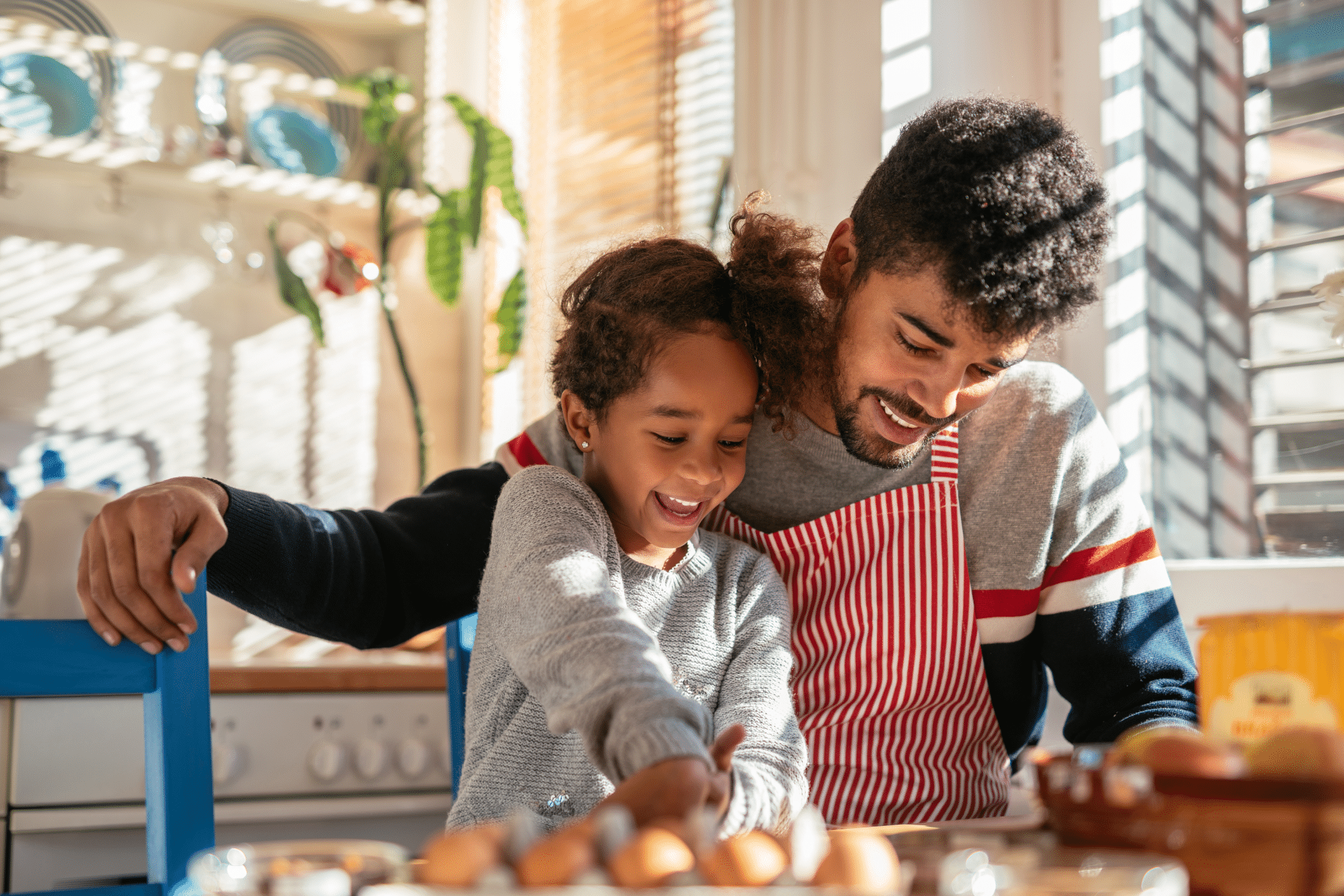Family Life
5 min Read
How to Teach Your Kids to Use Inclusive Language

June 10, 2021
Family Life
5 min Read

June 10, 2021

Lorie English’s daughter, Jack, was five years old when an older kid on the school playground made fun of her for her clothing: “Why are you wearing pink?” the boy teased. English and her husband knew that Jack, who was assigned male at birth, would face challenges when she started school. “We talked about how gender is fluid—that the gender you’re assigned at birth may not be the gender you identify with,” she says. They also made it a priority to equip Jack with responses about her choices, which is why her reply to the bully was so mature: “Clothes are just clothes, and I can wear whatever makes me feel good. And if you don’t want to be my friend because of that, that’s OK.”
People are always being introduced to acronyms and identities, says Omid Razavi, director of communications for Pflag Canada, a national charitable organization founded by parents who wished to help themselves and family members understand and accept their LGBTQ2S children. “The terms aren’t necessarily new—it’s just that society is finally starting to understand. We need to ensure the next generation is comfortable with inclusive language.” It’s also important to create inclusive environments so that all children feel “seen and welcomed exactly as they are, regardless of sexual orientation or gender identity,” says The 519 Glitterbug LGBTQ2S Mobile Program’s Best Practices for Creating LGBTQ2S-affirming Environments. Ultimately, Razavi says, kids look to parents, caregivers and mentors for guidance, so it’s vital that we lead by example.
English explained Jack’s transition to her son, Ben, now five, in simple terms: “Jack believes she is a girl, so Jack is going to be your sister.” As soon as they started using she/her pronouns at home, Ben caught on right away. Other than some questions about anatomy (English explained to her kids that “who you are in terms of your gender comes from inside, not from your body parts,”) the explanation was “literally that simple.” Now, Ben introduces Jack as his sister and will correct others when they make mistakes with Jack’s pronouns. Jack, now seven, can have conversations with adults about pronouns; she understands that some people are he/him, some people are she/her, some people are they/them. She also understands what it means to be two-spirited (a term used by some Indigenous peoples to describe their gender, sexual and spiritual identity). “And none of these were hard conversations,” says English. “Kids are really open to these ideas. As adults, we just have to be willing to have the conversations.”
Using non-gendered terms in your everyday communication is one way to begin to normalize inclusive language. Try to avoid using gendered pronouns when asking about siblings, for example. And introduce relatable topics around the dinner table. “Try saying ‘Hey, you’ve heard Sam Smith’s song. Did you know that Sam Smith came out as non-binary? Let’s explain what that means,’” suggests Razavi. “And talk about how important it is to make sure that everybody is comfortable living as their authentic selves.”
Jack’s first grade teacher was very supportive, which makes a huge difference. “She was not afraid to call us at home and say, ‘I noticed Jack seemed put off by being referred to as a boy, should we be making this transition in school?’” English says. Jack’s classmates are adapting well. “They struggle a little bit with pronouns, but not disrespectfully. But we can’t be afraid to make mistakes,” English continues.
Razavi agrees. “The LGBTQ2S community is ever-evolving, so there are growing pains and learning curves that come with that,” says Razavi. When children misgender or have a hard time wrapping their brains around any of these conversations, “we just have to try and break it down in simpler terms,” says Razavi. It’s also important not to single out that child in front of a group—the point is to make them feel like they’re able to grow and learn to restructure their language in a safe space. If it turns out a child is purposely avoiding using someone’s preferred pronouns, or picking on them for their clothing choices, “we have to let them know that words can hurt,” says Razavi. And we need to talk about what it means to be an ally: “It means speaking up in an informative and kind manner when you are seeing injustices happen, or you witness someone misgendering someone else.”
English and her husband have given Jack’s school lots of resources for learning how to teach kids to use inclusive language. Before the COVID-19 pandemic, they were in the process of drafting a letter to the parents of the kids in Jack’s class to prepare them for the pronoun switch, and to give them some tips around how to talk to their own kids about it.
“Make these conversations fun by celebrating how everybody has the right to live their truth,” says Razavi. “Because when they do, they shine bright.”